Multi-Purpose Roof Clip, Black Anodized Aluminum, Used to Secure Heat Tape and Other Types of Cables to Standard Asphalt Shingle Roofs, Maintains Roof Warranties, Fast to Install, Fast to Remove
$13.95
30 in stock

Keep your cable systems safe and tidy around the roof with the MPC-325. This clip can be used with any type of heat cable from self-regulating to constant wattage to AV or telecommunications. It is designed to work on asphalt shingle roofs ranging in thickness between 1/8”- 3/8”. Need to run cable vertically up a roof? Dealing with a woven shingle valley with no room for standard clips? Want to secure cable tightly to the lip of an exposed dormer flashing? The MPC-325 is a perfect clip to address the improvisational nature of cable installations in the field.
Installations require NO tools and NO nails or screws, greatly decreasing installation time while also eliminating potential liability associated with using traditional nail-on clips. Additionally, the MPC-325 can be easily repositioned or removed without damaging the roofing materials by simply bending up the top arms of the clip.
How it works: There are six robust aluminum barbs on the body of each MPC-325. These barbs embed, or ‘bite’, into the back of the asphalt shingle, creating a semi-permanent anchor that can be used for many years without creating damage when removed. The MPC-325 is a part of the Patented line of the Grip Clip™ family.
“Heat Tape Pro did exactly what I needed it to do. Now I don’t have to worry about water leaking into my house, because I can tell when it’s working by the little light on the end of the cable.”
-Michael P.
Amazon Customer
“This heat tape works as advertised. It was delivered to me fast, and although it’s a little complicated to install, the documentation is good..”
-Shaun D.
Radiant Solutions Customer
“I install thousands of feet of heat tape every year. This is the best stuff I’ve found to protect my customers homes and give them the piece of mind they need.”
-Patrick B.
Professional Installer
See Below
Measuring is not difficult and you can make measurements without going up on your roof or using a ladder if you err on the side of overestimating the distances. Here’s Radiant Solutions Guide to Measuring for Heat Tape, which gives a detailed overview of measuring and some tips and resources, if you think you need it.
Once you have your measurements, you can use our Heat Tape Calculator to help you determine the length of Heat Tape Pro you need, the number of Heat Tape Clips you’ll need, and misc. product considerations.
This includes, but is not limited to:
The type of roof you have determines the roof clips and accessories needed. Check out our Heat Tape Installation Accessories.
We are a family-owned business with less than 10 employees that has been in business since 2016. Our experience with ice dams goes far beyond that: our founder Steve started a business diagnosing and solving Ice Dam problems on customer houses for almost 35 years.
Installing our heat tape on your standing seam roof can be very effective in combating ice dam formation. There’s two main products used to install heat tape on your standing seam metal roof: The S-5 SR Heat Tape Clip, and the standard ice dam heat tape clip.
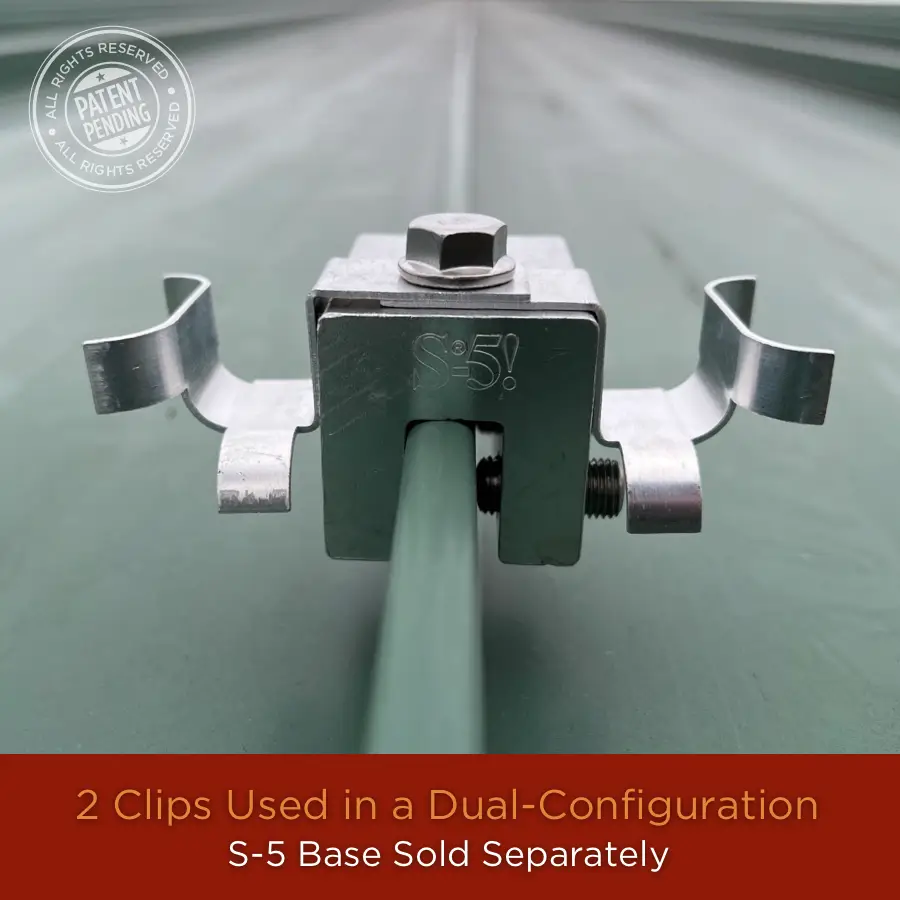
Installing Heat Tape on a Standing Seam Roof with the S-5 SR Heat Tape Clip
The S-5 Heat Tape Roof Clip is a new, patented roof clip design specifically for standing seam applications with a focus on ease of install and effectiveness. It is used in conjunction with the S-5 Base, which needs to be purchased separately. The S-5 base is designed to clamp onto the seam of a metal roof as the S-5 Clip holds your ice dam heat tape into position. Can be set up in a single or dual-clip configuration. (See product page for more info)
Installing Heat Tape on a Standing Seam Roof with Standard Roof Clips
There are specific ways/configurations used when installing heat tape on a standing seam / metal roof using standard heat tape clips. The following (2.6 – figure 16.0 & 17.0) shows a snippet of the HeatTape Pro installation manual showing two different clip configurations, more info can be found in the manual itself: Heat Tape Pro installation Manual
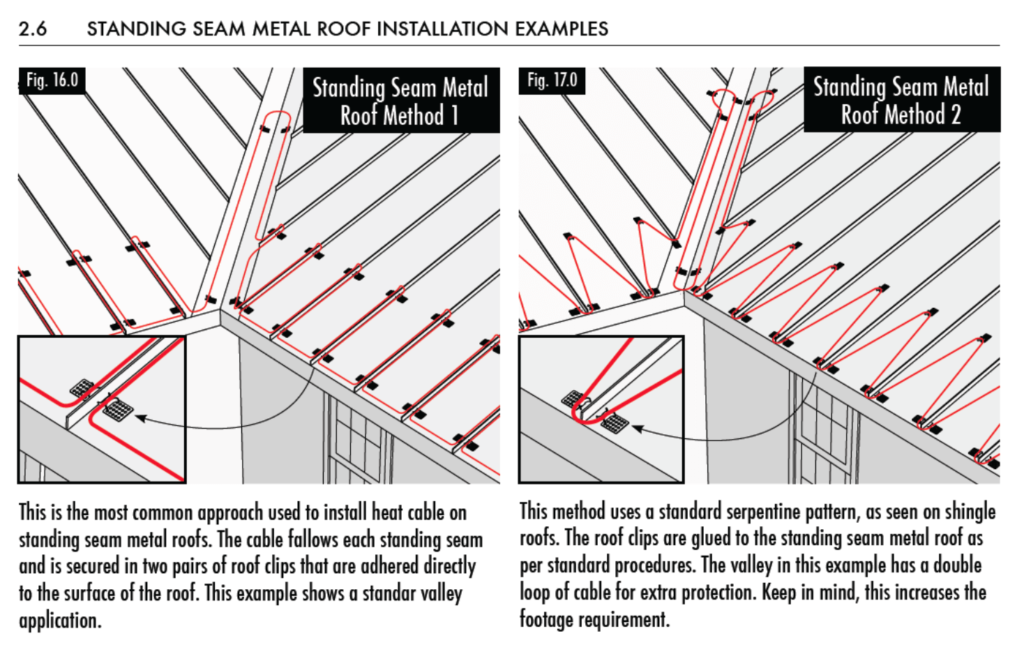
We have a calculated rate based on the product in your cart if you choose to ship to Canada or Alaska.
More can be found here.
Heat Tape Pro and Pipe Freeze Pro are offered in many lengths from 6-foot up to 150-foot. These products are not designed to be modified, so you should pick the length you need and work with that length. These cables should not be altered and doing so would void any warranty on the product.
We offer heat tape on spools from 250-foot to 1000-foot. These spools are designed to be cut to length, made into multiple cables, etc. Heat Tape on spools needs to be hard-wired into a junction box, or have a power connection plug-in manually added to it for use. It also requires ends to be properly sealed and terminated. When working with Heat Tape on spools, a Licensed Electrician should be utilized to assure proper wiring per regional codes and standards.
Heat Tape Pro has the most comprehensive installation system that works on almost any kind of roof type.
For information about installing Heat Tape Pro on a Natural Slate Roof, Click here.
For information about installing Heat Tape Pro on a Synthetic late Roof, Click here.
The terms heat cable, heat tape and heat trace are all used interchangeably to described heated cables used to protect pipes from freezing, preventing roof and gutter ice dams from forming and for safeguarding temperature sensitive components.
Other terms we’ve seen used regarding Heat Tape are:
Check out our full list of Frequently Asked Questions on our FAQ Page.
Take a Look at Our Heat Tape Installation Case Studies
Learn a Bit about Ice Dams and How & Why they Form
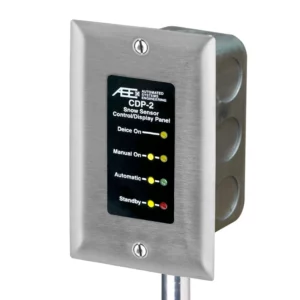
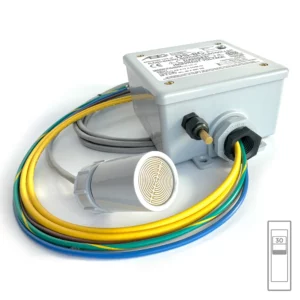
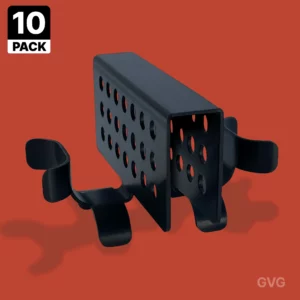
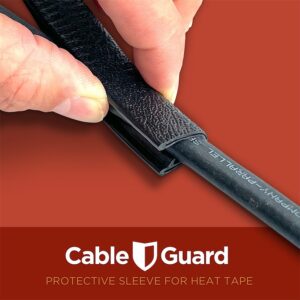
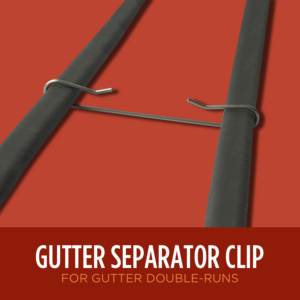
Find heat tape products & accessories for ice dam prevention and pipe freeze protection.
We may be able to help connect you with a Radiant Solutions Heat Tape installer in your area.
And Product Dimensions
Understand the problems that our products solve and the advantage Radiant Solutions has over our competitors.
Demand is high across the U.S. & installers are needed!
128-Bit encrypted connection
We’re here to help. We are a 35 year old, family-owned, American company who loves to hear from our customers.